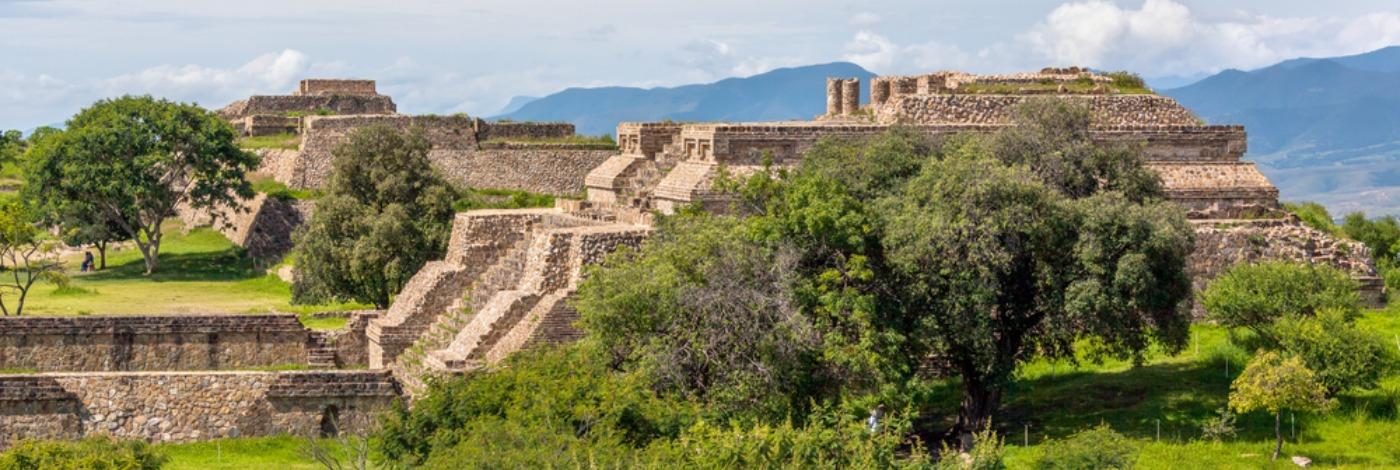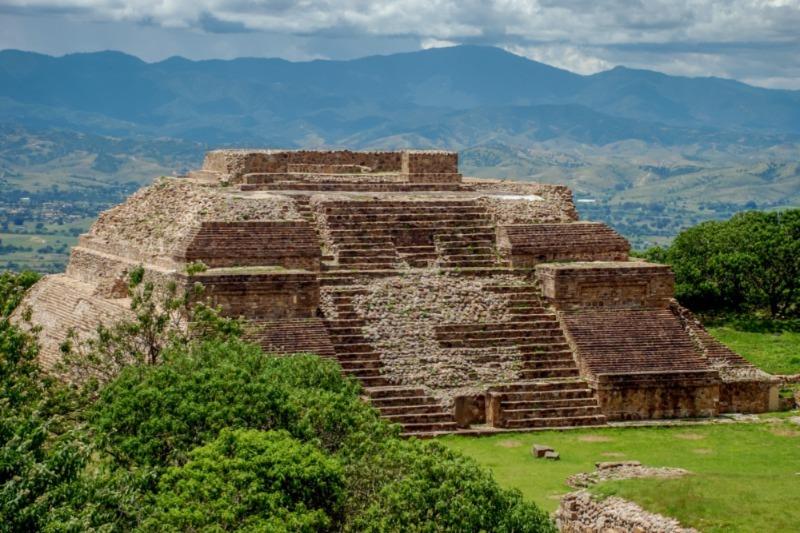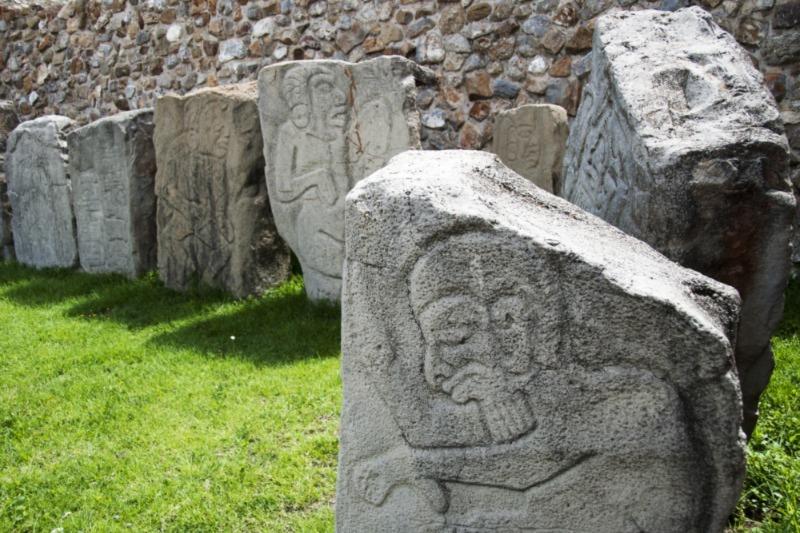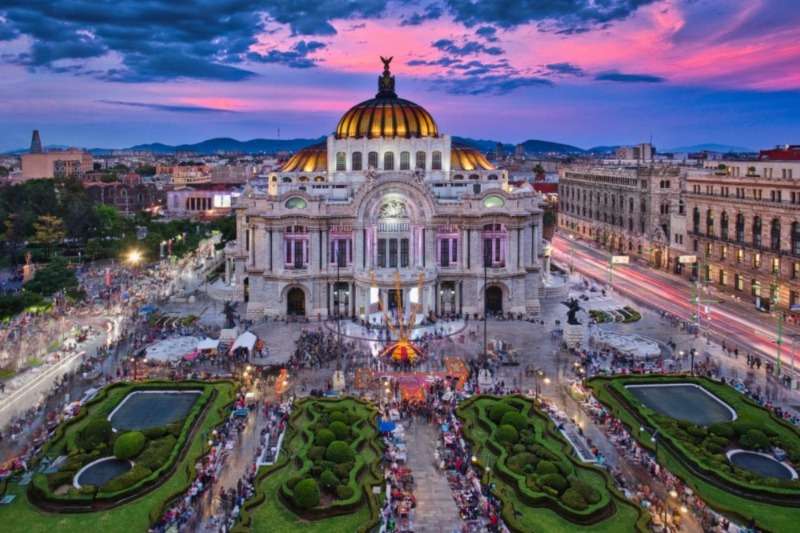
Stunning Monte Alban
Monte Albán in Mexico and adjacent Mitla are two outstanding archaeological sites in the state of Oaxaca, both of which are easily accessible by car from Oaxaca City.
Monte Albán is situated between two verdant valleys that were inhabited as early as 2000 BC (meaning White Mountain). The residents of this area erected a large city, the ruins of which may still be seen today, after leveling the mountain's summit. This archaeological site offers stunning vistas. The best schedule for your journey to this region of Mexico should include a stop at this archaeological center, which is only a short trip from Oaxaca City.
For more information, consult the guide to Oaxaca with Mexperience. The Museo de Oaxaca now houses many of the artifacts and treasures discovered on Monte Albán. Buses go frequently from the local bus station in Oaxaca City to Monte Albán, but for the best experience, take a guided tour.
Over 2,200 terraces, various pyramid structures, grand stairs, lavish palaces, intricate tombs, and even a ball court called Juego de Pelota, which is largely set up on its "Grand Plaza" are all features of Monte Alban. The ball court, which consists of two facing tiered platforms with the playing surface in the middle, is in excellent condition. The games were ceremonial, and the losers frequently met their doom.
The Mixtecs threatened the Zapotecs in 800 AD, so they fortified Monte Alban before being expelled. Around 1400 AD, the Mixtecs took control of the location and began interring its leaders in the Zapotec graves.
Monte Alban's features include more than 2,200 terraces, several pyramid structures, great stairway, opulent palaces, elaborate tombs, and even a ball court called Juego de Pelota, which is mostly built up on its "Grand Plaza." The playing area is in the center of the ball court, which is made up of two confronting tiered platforms. Games were only for ceremonial purposes, and losers frequently met their demise.
In 800 AD, the Zapotecs were in danger from the Mixtecs, so they fortified Monte Alban before being driven out. The Mixtecs took over the area in 1400 AD and started burying their leaders in the Zapotec cemeteries.
Key Attractions
La Gran Plaza (Great Plaza), the city's geographic center and measuring over 60,000 square meters in size, is where you should begin your exploration of Monte Alban in Mexico. Nearly as big as the Grand Plaza, the Plataforma Norte (North Platform) is the location of a ceremonial area that includes an altar.
The Monte Alban Story
Over the course of 1,500 years, the Mixtecs, Zapotecs, and Olmecs occupied the pre-Columbian ceremonial center known as Monte Alban. Other ancient civilizations like the Nahua (people from Teotihuacan), Aztecs, and Maya also had an impact on this site. There are temples, tombs with hieroglyphic inscriptions, a ball court, and other relics of ancient pre-Classic and Classical civilizations.
The site, whose name translates to "White Mountain," is one of the most significant ones in the Oaxaca Valley. From 500 BC to 850 AD, it served as the center of the Zapotec civilization. The location had already been abandoned when the Spaniards came.
The location has long been the subject of archeological research because of its distinctive size and chronology. In 1987, Monte Alban was named a UNESCO World Heritage Site.
A number of civilizations, including the Olmecs, Zapotecs, and Mixtecs, inhabited Monte Alban for around 1,500 years, and at its peak, there were about 25,000 people living there.
The Olmecs, who are attributed for carving the monument of Los Danzantes, which consists of over 140 stones and features damaged images, are said to have been the first people to live on Monte Alban. What these numbers signify has been hotly contested. Los Danzantes is Spanish for dancers, however it has been suggested that these were actually battles. While there are some remnants of Olmec construction, the Zapotecs, who are considered to have arrived between 800 and 500 BC, are responsible for most of the constructions that can be found at Alban today. The building process went on for many years, and later Teotihuacan culture had an impact.
The National Anthropology Museum
If you want to learn more about the history of Monte Alban in Mexico, the museum is a fantastic place to start your visit. Among the few objects from the location are ceramics, remnants, miniature sculptures, and a few carved stone danzantes (from the Los Danzantes building). There is also a bookstore, a café with a terrace from which you can take in stunning views of the location and the valley below, and tour guides that you may engage for your stay.
The Central Plaza
The majestic heart of the site was the Main Plaza at Monte Alban in Mexico. Here are the locations of the civic and ceremonial buildings that the populace uses. Additionally, there are a number of homes in this neighborhood that scholars think belonged to Monte Alban's wealthy citizens.
The Tennis Court
A ballcourt is located right by the Main Plaza, next to more upscale homes and temples. Ballgames and other sporting events, as well as cultural events like festivals and musical concerts, were all held on this court.
Platform North
An altar and a ritual space are on the North Platform. Find Stela 9, a stone pillar with carvings on all four sides, as soon as you enter the North Plaza. Since 1987, Monte Albán has been a designated UNESCO World Heritage site. To raise awareness of the numerous threats to the site and to encourage the preservation of the archaeological zone, Monte Albán was added to the 2008 World Monuments Watch list. The hieroglyphic inscriptions at Monte Albán provide important insight into the ancient Zapotec civilisation, but as a result of excavations, they quickly deteriorated due to exposure to the elements. The structural integrity of the site was also in danger from looting and vandalism, as well as from unrestricted tourism; the general public was not often given clear instructions on how to protect the site and its fragile remains. To allow tourists to take in the splendor of the ancient site while avoiding areas that are too fragile to support considerable foot traffic, a better tourism management plan was required.
The Monte Alban Tombs
Follow the trail from the northern edge of the North Platform if you still have the desire to explore some of Monte Alban's tombs. It's a pleasant stroll, some of it shaded by tall trees, and on this side, where few people venture back that far, you can find some privacy. You'll see a few tombs, but you can't enter any of them because they are all locked. Away from the site, their items are housed in museums.
Danzantes Los Mont Alban
You arrive at the Danzantes Gallery and Building, the site's most intriguing location, after passing the first pyramid. Here, about 300 of the so-called danzantes stone slabs were discovered, some of which are still in their original locations. Others surround it while others are embedded in the building's walls.
Although the name implies that the stone slabs show dancers, this notion has now been proven false. The widely accepted belief now is that the "dancers" are actually tortured prisoners or sacrifice victims, as seen by the way their bodies are displayed. Whatever you may think of them, they are nonetheless intriguing from an artistic standpoint.
Discover the best Mexico Packages from here!

Tips
Wear good walking shoes because you will need to move even if you elect to stay in the Great Plaza instead of climbing any of the structures. No matter what time of year you visit, the area around Oaxaca is typically hot and humid, so pack light. Winter is the ideal season to travel because the weather is more pleasant and temperatures are lower. The weather can be very hot and rain is more common in the summer, but the scenery is greener.
You will not find much shade wherever you go, so bring a hat, sunscreen, and water. Before you begin visiting the site, purchase a hat if you forgot it at the entry.

related tours

11-Day Vacation in Mexico
11 Days / 10 Nights
From
$ 2889

11-Day Vacation in Mexico
11 Days / 10 Nights
From
$ 2889
